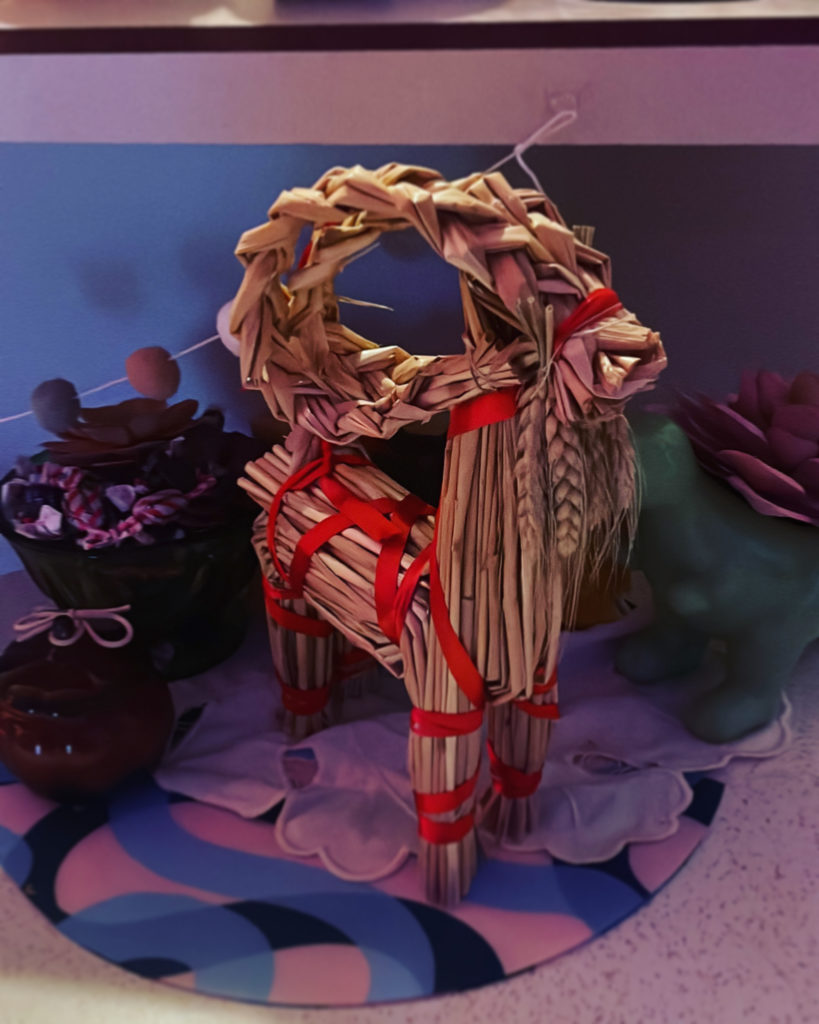Kekri and reflections on tradition
Last week, I had a very small, almost unspectacular, Kekri celebration.
Kekri is the harvest festival, end of the year essentially, in Finland. The name itself comes from “kekra” or cycle. When the harvest ends, you prepare for winter (a kind of “dead” time), before the year begins again in spring with new life and planting the new harvest. You give thanks for the harvest you have, and sacrifice an offering from your bounty to ensure a good harvest next year.

The kekripukki* — or Kekri goat/buck — is one such offering. And one such item which has been absorbed into Yule, as many other Kekri traditions did as Finland became more christian. Made of straw, the kekripukki is burnt and there is a feast (or moreso, a formal dinner) for both the living and dead.
Kekri is a time to honor your ancestors. They were welcomed into the home, the sauna prepared for them, and food and drink set for them. Often letting them enjoy the festivities in peace on their own. I didn’t make a plate for my ancestors (nor do I have a sauna), but I did make a plate for my mom. Pork loin with maple apple bacon jam and roast root veggies. Apple pie for dessert.
One day I’d like participate in the more social side of Kekri — dressing as a kekripukki in masks and furs and going to friends and family’s homes asking for food and drink. (And if they don’t, you threaten to break their stove!) It’s silly and feels fully and completely Finnish.
I’ve always had an interest in my Finnish roots and heritage. My great-grandparents came to the states in 1904 (quite the contrast from my dad’s Quaker side which were amongst the first colonists). When it comes to Finnish magic… I feel very alone. I struggle to find resources and other practitioners — which largely my lack of knowledge of the language is a huge barrier. I have the Kalevala, I know a handful of the gods, and know a handful of the holidays. But I still feel like I am very much fumbling through everything. A lot of the traditional beliefs were either abandoned or absorbed into christian conversion. The Kalevala itself is a curated and edited collection of folklore published in the late 19th century.
Mhara Starling of Modern Witch wrote an interesting piece back in September asking if our practices need to be “ancient.” This is essentially at the root of what I’ve been struggling with. Am I any less of a Finnish American witch because of my lack of access and knowledge of traditional beliefs and practices? Can I still pray to Ukko if I’m not sure if Ukko is his own unique person, or another name for Ilmarinen? And is this confusion because my knowledge of Ilmarinen is limited to the Kalevala? If I had access to the runes — the tales and songs and poems — would my understanding be better? But as I search and search, I cannot seem to find these original pieces, and I wonder, how many of them are mostly forgotten.
I’m planning to return to Finland next year, but I don’t think my still fairly Lutheran family will have answers for me. I’m hoping I can make some acquaintances online, like-minded folk who might be able to direct me towards answers. And who knows, maybe my cousins will surprise me and have folktales to share. For now I’ll keep going as best I can.
*The kekripukki, or rather “jouhupukki”, is the origin of Santa Claus. But more on that later!